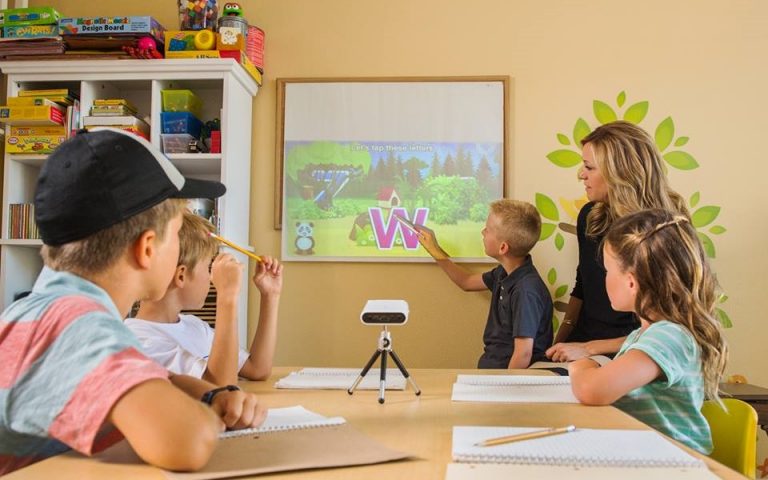Pico-projectors sound like an absolute dream for anyone who has to travel with a standard projector in tow. Being able to attach a small device to your phone has the potential to eliminate one heavy bag and to give your shoulder a badly-needed rest. In reality, of course, they don’t have the power that a “real” projector has, so you’re not going to thrill an audience in a big room using your phone. But when the need arises, they can allow for ad hoc display of anything on a modest patch of wall.
Microvision is in this business; they make a Touchpico-projector that uses a single laser for each color and a movable mirror to create a workable image for a small presentation or a heads-up display. Much of their future work will focus on the same thing everyone else is focusing on: reducing power. Right now they do that by blanking any lasers that aren’t in use at a given instant; future gains will be had by improved green and blue LED efficiency, working an efficient modulation scheme, and taking advantage of Moore’s Law improvements in the digital controller. All to get under 1 W. I know; sounds high, but this thing is all about projecting enough light to overcome the ambient.
Ever wonder how much power those monster projectors in auditoriums suck down? Lots, judging by the cooling units… And that’s for use in a darkened room… But power reduction is an evolutionary improvement. This year they’re looking to change the game by measuring reflections when the scanning laser beam is blocked by something like a finger. Since the system knows where it was shooting the beam when the unusual reflection occurred, it can provide coordinates for the obstruction.
In other words, if you point, the system can figure out what you’re pointing to. This really changes the nature of the presentation from simply a passive transmission of visual images to a – must I use the phrase? – collaborative engagement. The idea is to turn the wall where this is being projected into a temporary tablet on the scale of 2-3’ (5-8’ in a darkened room). I’m assuming that this isn’t trivial to do.
The background against which these “reflective anomalies” are detected isn’t predictable. One day the projector might be in a bright room shining on a yellow wall; another day, another café, perhaps darker, with a light blue wall. So they will presumably need to normalize the current environment as a calibration step so that they can figure out when a reflection is anomalous. But this seems typical of a lot of the work being done in the realm of smart systems: extract useful signals out of extraordinarily noisy environments. We actually seem to be getting pretty good at it.

